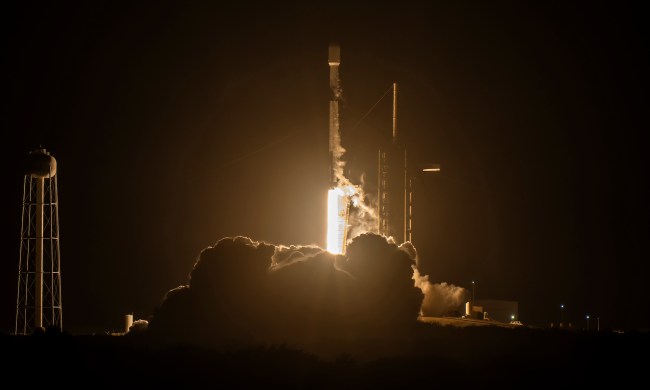Rocket Lab is making a name for itself in the small-satellite launch sector as it seeks to take on the almighty SpaceX, among others.
The Los Angeles-based company in recent days completed its 12th commercial mission using its Electron rocket as it moves toward ramping up its launch frequency in the coming months.
Just like that, we’ve hit a dozen launches! Find out more about number 13 tomorrow. pic.twitter.com/PE9myNP7YA
— Rocket Lab (@RocketLab) June 15, 2020
Indeed, Peter Beck, Rocket Lab’s New Zealand-born CEO, has just announced plans for the private space company’s 13th launch, scheduled to take place on July 3 or soon after.
The mission, called Pics Or It Didn’t Happen, will see the Electron lift off from Rocket Lab’s launch site on New Zealand’s Mahia Peninsula. The back-to-back missions will represent Rocket Lab’s fastest turnaround between outings to date.
Satellite deployment
Pics Or It Didn’t Happen will deploy seven small satellites to low-Earth orbit for a number of customers, among them Spaceflight customer Canon Electronics, as well as Planet and In-Space Missions.
Canon Electronics’ CE-SAT-IB satellite will aim to demonstrate the company’s Earth-imaging technology featuring high-resolution and wide-angle cameras, and at the same time test the microsatellite for possible mass production.
The rideshare payload will also include five SuperDove satellites built by San Francisco-based Planet, operator of the world’s largest constellation of Earth-observation satellites. Interestingly, Planet recently took a ride on a SpaceX Falcon 9 rocket for the deployment of three of its SkySat satellites in a mission that marked the debut outing for SpaceX’s Smallsat Rideshare Program.
The final satellite riding aboard the Electron comes from British firm In-Space Missions. The Faraday-1 6U CubeSat offers a low-cost route to orbit for startups, institutions, and large corporate R&D groups, with the mission designed to offer a demonstration of In-Space’s own software-defined payload that will enable uploadable payload capabilities on future missions.
Beck said that launching missions in quick succession will help to demonstrate Rocket Lab’s capability to provide dedicated and responsive space access to small-satellite customers.
Rocket Lab says it wants to offer customers launches every month, and is working to build a new Electron rocket every 18 days to fulfill that aim. It’s also working on a rocket recovery system that uses a helicopter to pluck a falling booster out of the sky as it falls back to Earth after launch (you can see a test run in the video at the top). Creating a reusable rocket system would allow the company to further reduce the cost of space transportation and allow it to prep new launches more quickly.
Other upcoming Rocket Lab missions include one for the U.S. Space Force later this year and, in 2021, a trip to the moon for NASA that will see the deployment of a CubeSat designed to explore the lunar orbit that will be occupied by the Gateway, a space station that could see astronauts orbiting the moon by 2025.


